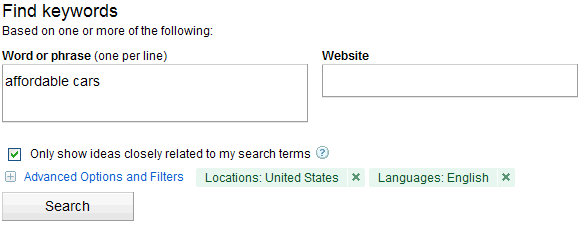Keywords for High SEO Rankings
If you’re familiar with SEO, you’re familiar with the concept of keywords. But, do you know which keywords are most likely to generate the best results for your website? What works for your competitor’s site may not necessarily work for yours…
The best keywords are not always obvious.
When you go about identifying keywords, it’s natural to think of the obvious choices – for instance, if you’re in the business of selling vehicles, you might assume cars, trucks, and SUVs are good, solid keyword choices. Well, they may be great choices IF you have a massive budget to corner the market on those highly competitive words. The reality is there are thousands of competing sites that already have decent rankings for those keywords. If you focus on words like cars, trucks, and SUVs, you’re going to be spinning your wheels near page 378 in Google search results.
Long tailed keywords are the way to go.
If you’re in the auto sales industry, you’ll naturally include words like cars, trucks, and SUVs on your site pages because, after all, that’s what you’re in the business of selling! However, that doesn’t mean you should focus on these specific words for SEO purposes. Instead, focus on long tailed keywords that have moderate to low competition AND receive reasonably high monthly searches. How do you pick strong long-tailed keywords? Here’s how:
Finding competitive keywords.
Go to Google’s AdWords Keyword Tool. Enter, let’s say… affordable trucks in the “Word or phrase” box. Be sure to checkmark the box that says, “Only show ideas closely related to my search terms.” Choose the proper settings for your Location and Language too.

Over on the left hand side is a column labeled, “Match Types.” Checkmark the box labeled, [Exact]. If you’re looking for how many people search on your specific keyword, use this option. An exact match word is always enclosed in brackets.

Under Search Terms, the phrase, [affordable cars], has 1,900 local monthly searches and the competition meter shows that it has high competition.
It would be pretty hard to rank highly for this particular keyword in Google search results, so let’s take a look at some better options. On the right hand side, click on the “Local Monthly Searches” header to sort the column in the order of largest to smallest.


The results that show the highest monthly search count all happen to have medium competition levels. If you happen to be in the business of selling used cars and sports cars, [affordable used cars] and [affordable sports cars] might be good keywords to consider. Also, [best affordable cars] and [most affordable cars] would be ones to consider.
Takeaways
Effective SEO relies heavily on keywords, so be sure to choose your words wisely. If certain keywords don’t seem to produce good enough results, experiment by switching them out for other keywords. Cut your competition by focusing on long tailed keywords. Own the keywords you select and aim at ranking highly for them.








